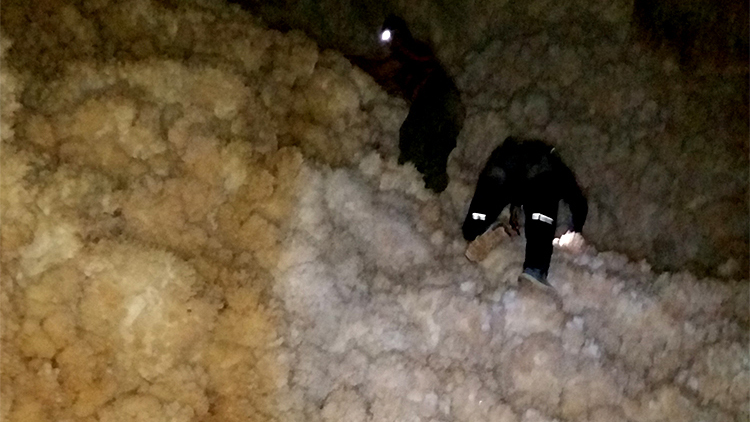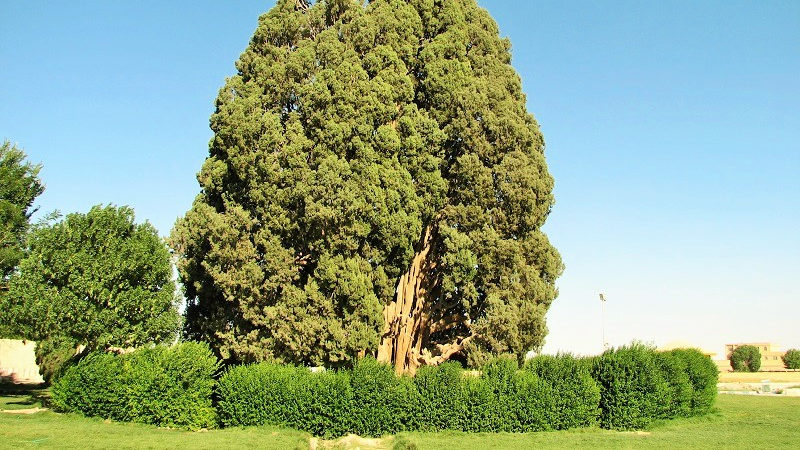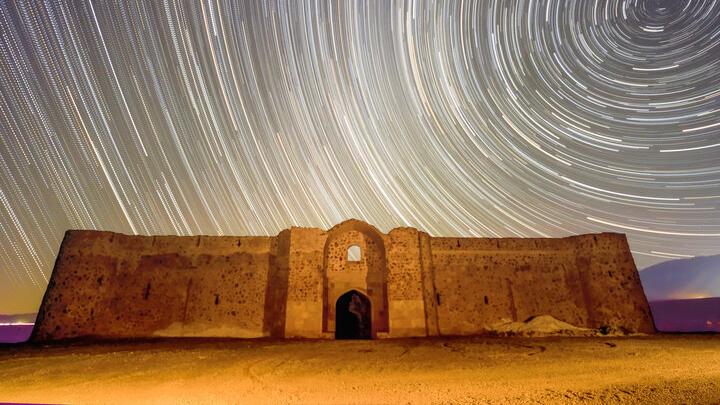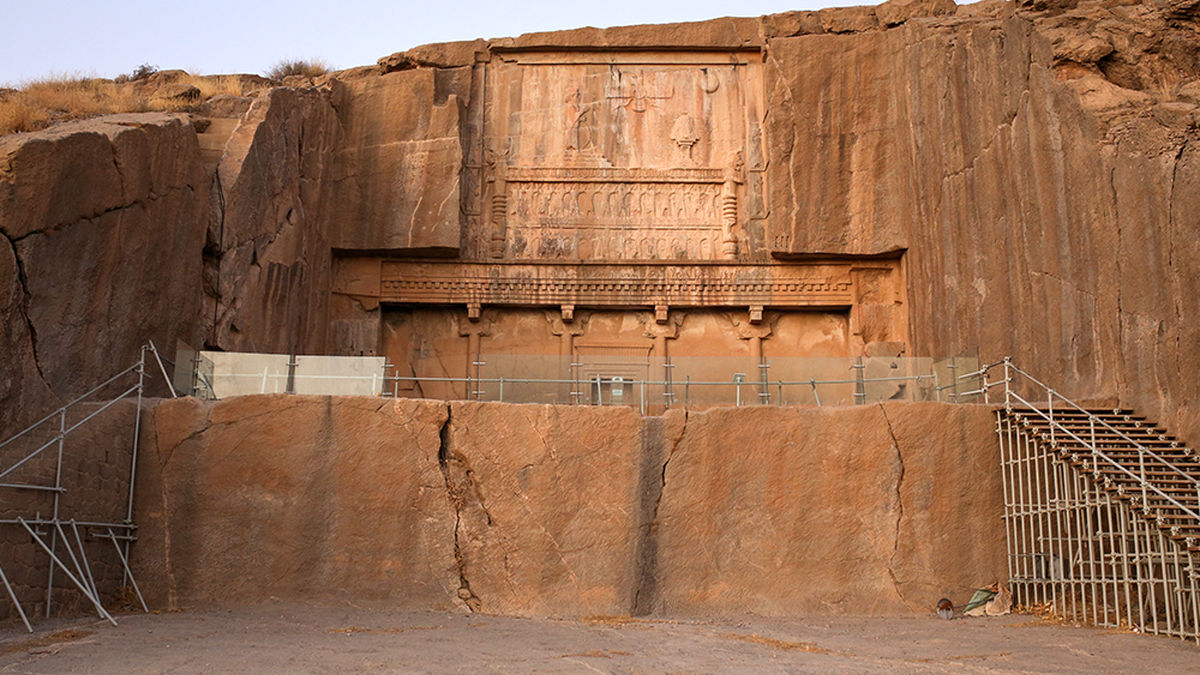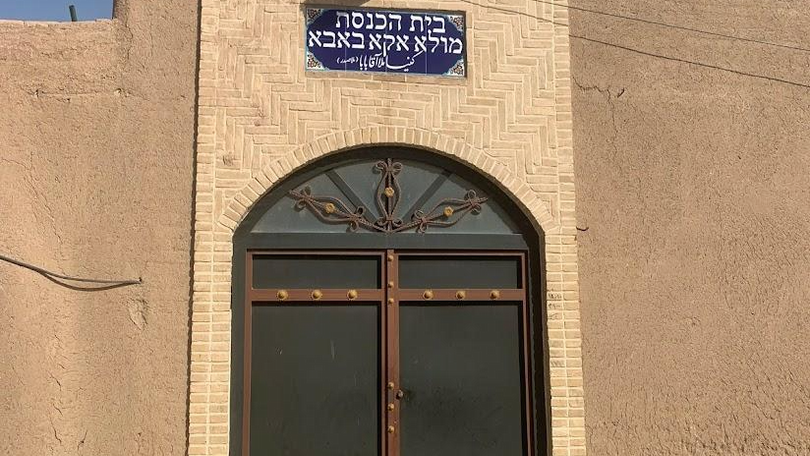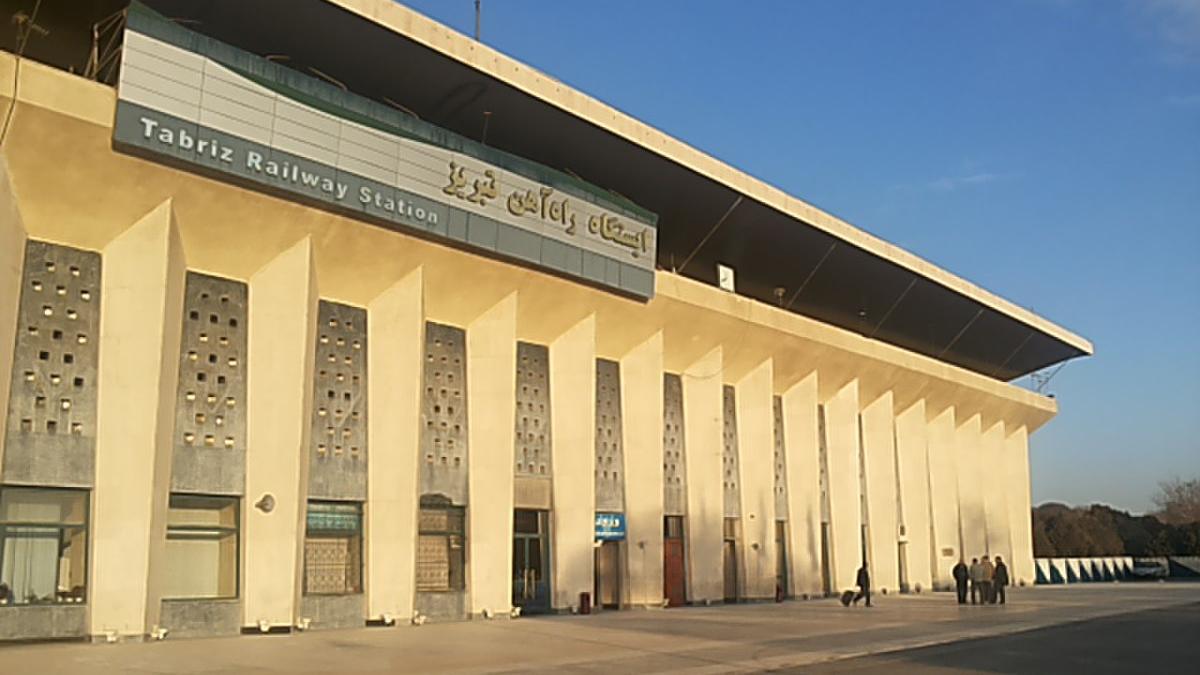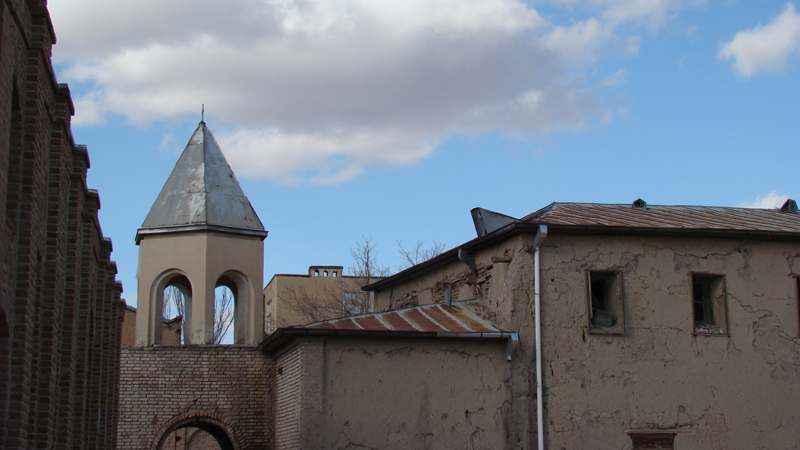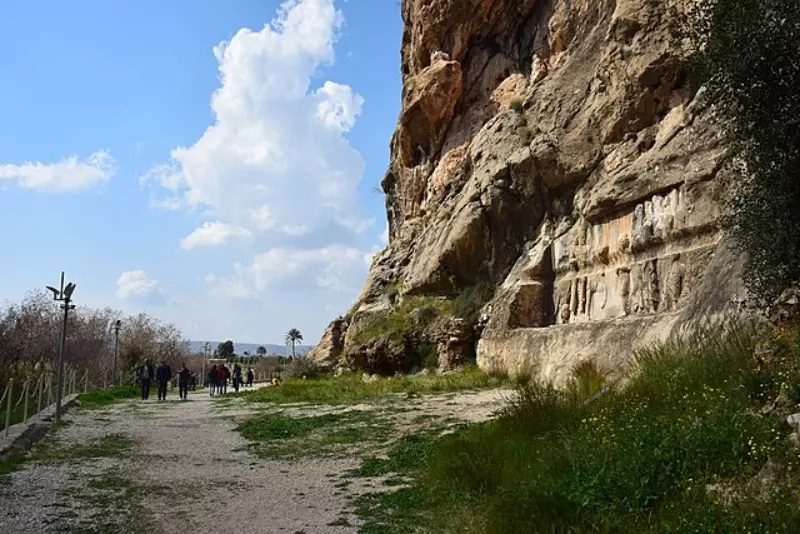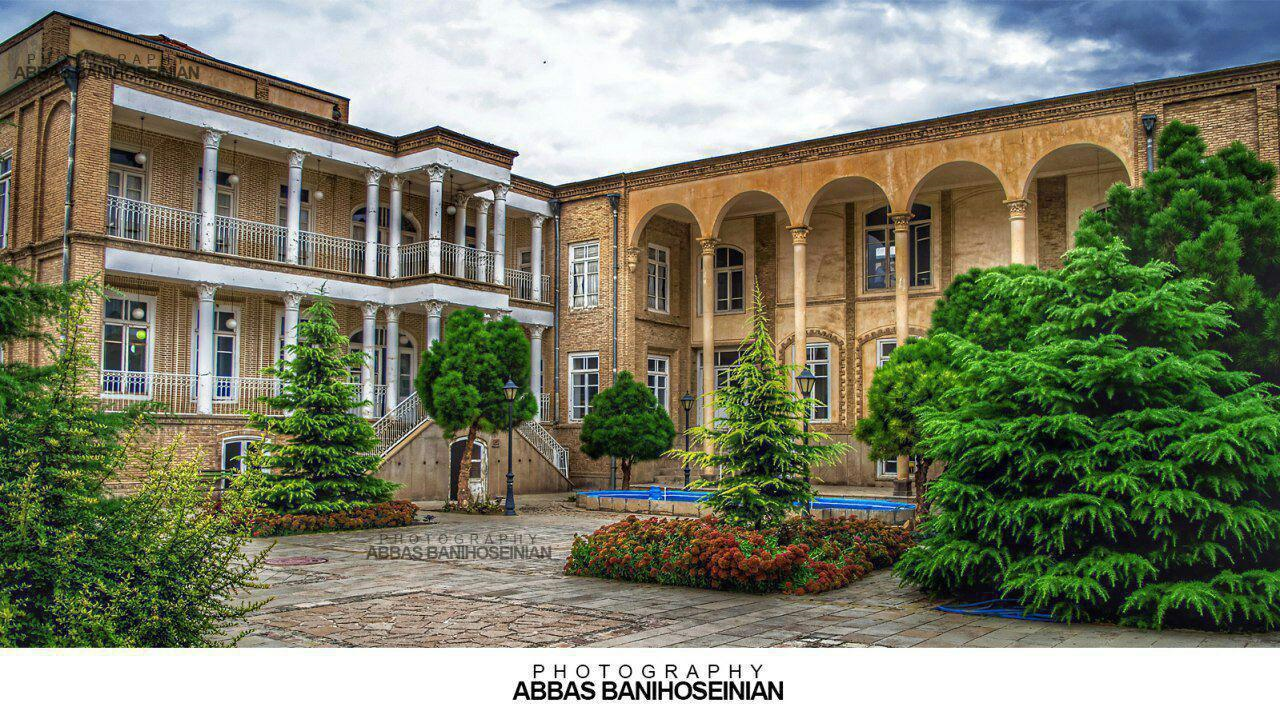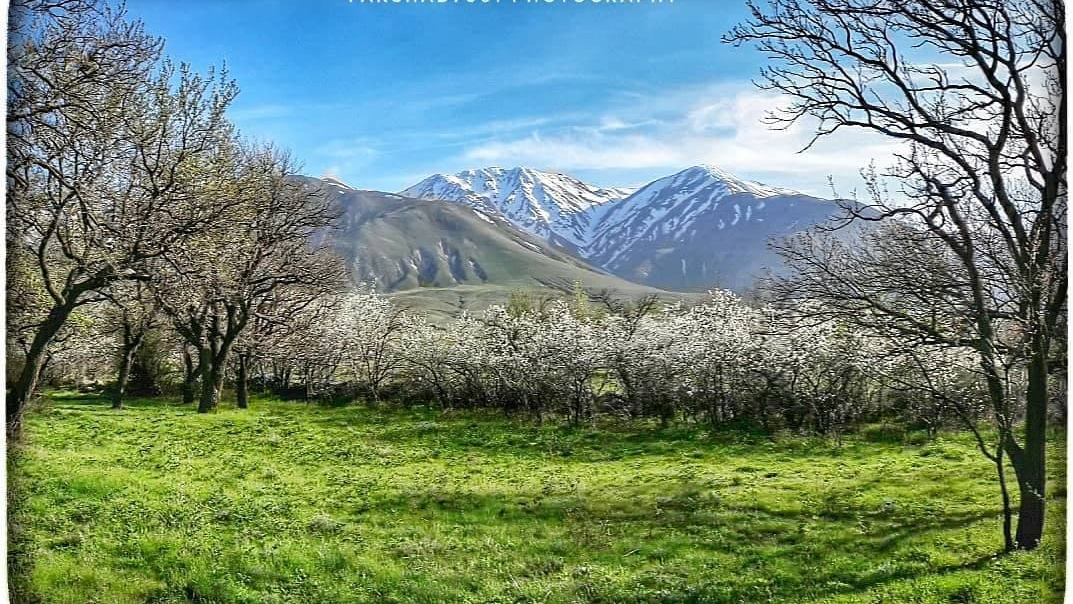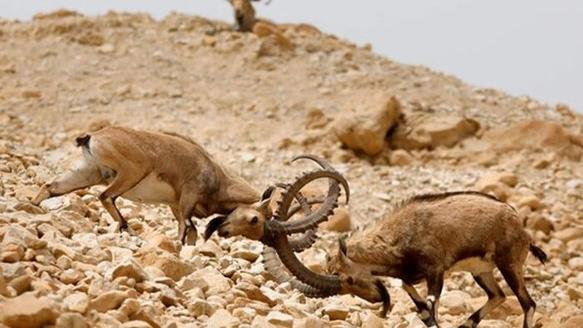The rock relief and inscription of Darius are located within the Bisotun World Heritage Site.
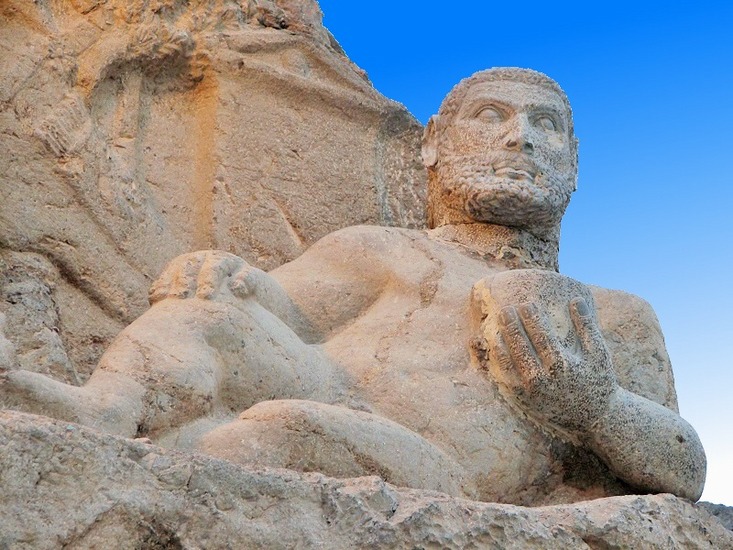
Bisotun Historical Complex: A Chronicle of a 3,000-Year-Old Civilization
Bisotun Historical Complex: A Chronicle of a 3,000-Year-Old Civilization
Every corner of ancient Iran is filled with historical relics, but among them, some hold exceptional significance. The Bistun Historical Site in Kermanshah is one of these remarkable sites and has been inscribed on UNESCO’s list of World Heritage Sites as part of Iran’s cultural heritage.
The name of this site is derived from Mount Bistun. In this area, there is a prehistoric cave called the “Hunters’ Cave”. Based on the evidence found in this ancient cave, human habitation in the region dates back 40,000 years.
Throughout history, this region has held special significance. At one point, an ancient trade route connecting Iranian merchants with Mesopotamia passed through a valley in front of Mount Bistun. The historical remains of the Bistun site are so rich that artifacts from the Medes, Achaemenids, Sassanids, Ilkhanids, and Safavids have been discovered there. In other words, human civilization has existed in this area for 700 years before Christ to the present.
Bisotun Rock Relief
After the death of Cyrus the Great (529 BCE), the founder of the Achaemenid Empire, no successor had been clearly appointed. This led to chaos in the empire, and many individuals claimed to be Cambyses, the son of Cyrus. In this situation, Darius I and other Achaemenid nobles decided to eliminate the false claimants to save the country from collapse and establish order and law. Thus, a two-year process began, and ultimately Darius I succeeded in suppressing the false claimants. He ordered that the truth be written on pieces of parchment and clay and distributed everywhere. The content of these documents was also engraved on a rock at Mount Bisotun. Today, this inscription is part of the Bisotun World Heritage site.

The inscription of Darius, carved in cuneiform script on Mount Bisotun, is known as the largest rock inscription in the world. It records the true identities, origins, and claims of false pretenders, as well as the details of their capture. Another relief depicts the described story in a single scene: nine rebels are shown chained in a row, while a Zoroastrian priest named Gaumata (or Gaumâta) lies beneath the feet of Darius.
The decipherment of the Bisotun inscription had a remarkable impact on the understanding of cuneiform script and the behavior of ancient civilizations. In this regard, the inscription can be compared to the Rosetta Stone in Egypt.
The significance of the Bisotun Historical Site is not limited to the inscription of Darius; throughout history, many other monuments have remained there, some of which are mentioned below:
- Hunters’ Cave: Artifacts from the Neanderthal era (around 40,000 years ago) have been discovered in this cave.
- Remains of the Median Civilization: A fortress located near the Bisotun inscription is estimated by experts to date back to the 8th or 7th century BC. There is also an alcove beneath the relief of Darius, attributed to the Medes, which was most likely a sanctuary or a place of worship.
-
-
Remains of the Seleucid Empire: From the Seleucid period, a statue of Hercules has remained, depicting him with curly hair, reclining in front of an olive tree. The head currently attached to the statue is not the original, as it was stolen twice. The last attempted theft occurred in 1991 and was unsuccessful. After the stolen head was recovered, it was transferred to the Cultural Heritage Treasury, and a replica was created based on its form.
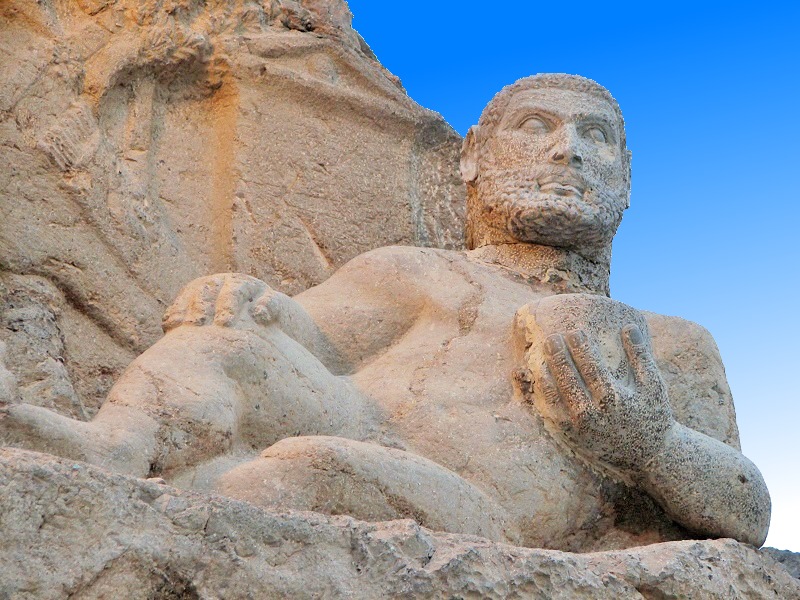
Hercules Statue in the Bisotun Historical Site
Parthian Period Remains at Bisotun
Within the Bisotun historical site, some remnants of the Parthian city can be found. There are also several rock reliefs from this period: one belonging to Gotarzes II, another associated with Mithridates II, and a third relief related to King Vologases (Bālash). Additionally, there is a site from this era that was likely used for religious or worship purposes.
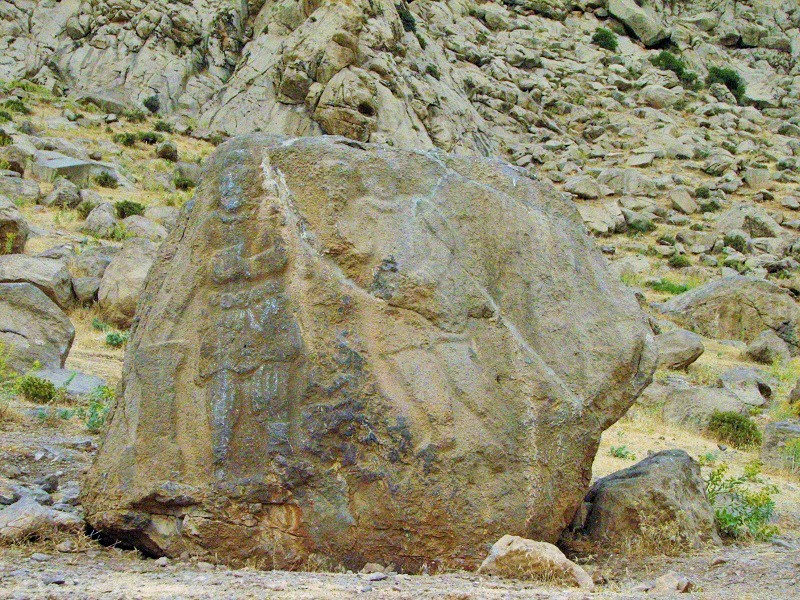
Parthian Kings’ Rock Reliefs at Bisotun
-
Sassanid Era Remains at Bisotun
At the Bisotun historical site, there is a palace believed to have belonged to Khosrow II of the Sassanian Empire. During this period, the “Farhad’s Carvings” (Farhād Tarash) were created. These are vertically cut stones located in a rectangular area at the foot of the mountain. Based on the shape and angle of the cuts, it appears that the intention was to create rock reliefs in this area. Some associate these stones with the romantic story of Shirin and Farhad, as recounted in Persian literary works, although there is no scientific or historical evidence to support this connection.
-
Ilkhanid Caravanserai at Bisotun
Within the Bisotun historical site, there is a caravanserai constructed of brick and mortar. Its arches and walls are partially built, and it is located at the lower slope of the mountain, near the Bisotun inscription. Based on some findings, the foundation of this structure dates back to the reign of Khosrow Parviz of the Sassanian dynasty. During the Timurid period, minor construction activities were carried out by nomadic groups at this location, but these modifications were not extensive.

Mithridates Relief – Zangeneh Inscription at Bisotun
Safavid Monuments at Bisotun
During the Safavid era, caravanserais were constructed across Iran to facilitate travel and trade. One of these caravanserais was built within the Bisotun historical complex, located a short distance from the famous inscriptions. Additionally, an inscription belonging to Sheikh Ali Khan Zangeneh dates back to this period
Location of the Bisotun Historical Complex
The Bisotun Historical and Cultural Complex, covering an area of 1,650 hectares, is located 30 kilometers northeast of Kermanshah city in western Iran. This site was registered on Iran’s National Heritage List in 2003, and among its remarkable features, the Darius inscription was included in the UNESCO World Heritage List in 2007.
| Name | Bisotun Historical Complex: A Chronicle of a 3,000-Year-Old Civilization |
| Country | Iran |
| Type | Historical |
Choose blindless
Red blindless Green blindless Blue blindless Red hard to see Green hard to see Blue hard to see Monochrome Special MonochromeFont size change:
Change word spacing:
Change line height:
Change mouse type:
